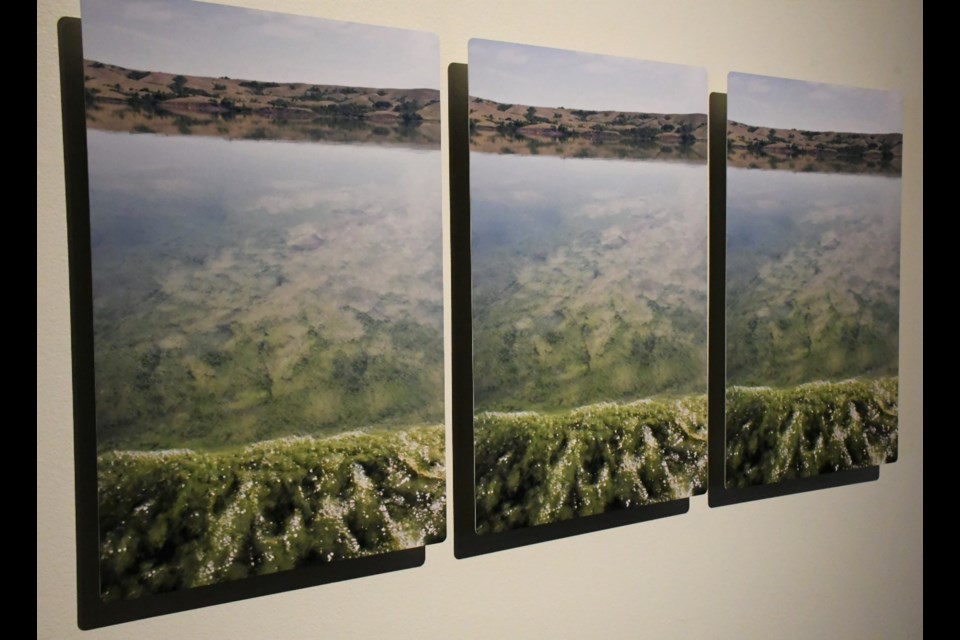Saskatchewan’s water sources are interconnected and fragile, which is why society needs to protect that precious liquid since the environmental effects on those water systems will ultimately affect everyone.
That is the message that Saskatoon artist Susan Shantz attempts to convey in “Confluence,” the newest exhibition at the Moose Jaw Museum and Art Gallery. The display opens on Saturday, Feb. 5 and runs until Sunday, May 1st.
Her exhibition uses book works, embroidered objects, videos and physical installations to provide an artistic and scientific exploration of the water that sustains the province. These sources come from the glaciers in the Rocky Mountains to the Bow Oldman River in Alberta to the South and North Saskatchewan Rivers to Buffalo Pound Lake and beyond.
“While I experience the river near my home as a natural phenomenon and place of beauty, after learning more about the river from scientific and environmental perspectives, I have come to realize it is a highly managed water source,” Shantz said.
“Drawing on the field trips to sites along the river, I use a variety of media — from textiles to videography — to consider the currents that connect us in this prairie water basin.”
Art gallery director Jennifer McRorie expressed her excitement about this exhibit, noting Shantz spent the last several years researching Saskatchewan’s drinking water sources with a team from the University of Saskatchewan.
“She’s really trying to encourage people how this water that we source, we take into our bodies, and it makes up 70 per cent of our body, so this is something that we need to think about and protect because these are fragile and very interconnected waterways,” the director said.
This exhibit is timely since society is dealing with environmental issues that affect water sources, McRorie continued.
For example, a video in the exhibit comes from a buoy in Buffalo Pound Lake that reads oxygen levels there. The results show that a decline in oxygen levels contributes to regular algae blooms and the death of fish.
“So it’s something that really impacts our community, but it’s also very topical with the ongoing concerns of climate change,” she added.
Another part of the exhibit features four ripped tarps hanging from the ceiling with lights streaming from above, throwing shadows on the ground showing the waterways from British Columbia to Manitoba.
“It just feels kind of magical in a way, even though it’s talking about pretty important and serious. There is a real playful element to the work, so anybody coming in will find that they can explore and investigate,” said McRorie. “And I hope people will feel like they’re going on a bit of a journey when they come into the gallery.”
The art gallery wants to have Shantz talk in person about her work, but that could turn into a virtual get-together. However, McRorie hopes a meet-and-greet happens in mid-February.
A secondary exhibit attached to Shantz’s work is a community-focused project called “We are the Lake.” Attendees — including classrooms — are encouraged to hold a sign saying they are composed of 70-per-cent water and from where their water comes.
A photographer will then insert Buffalo Pound Lake in the background and create an online virtual exhibition of those photographs. The pictures could also be featured on a digital billboard in town.
Visit the Moose Jaw Museum and Art Gallery’s Facebook page for more information.




